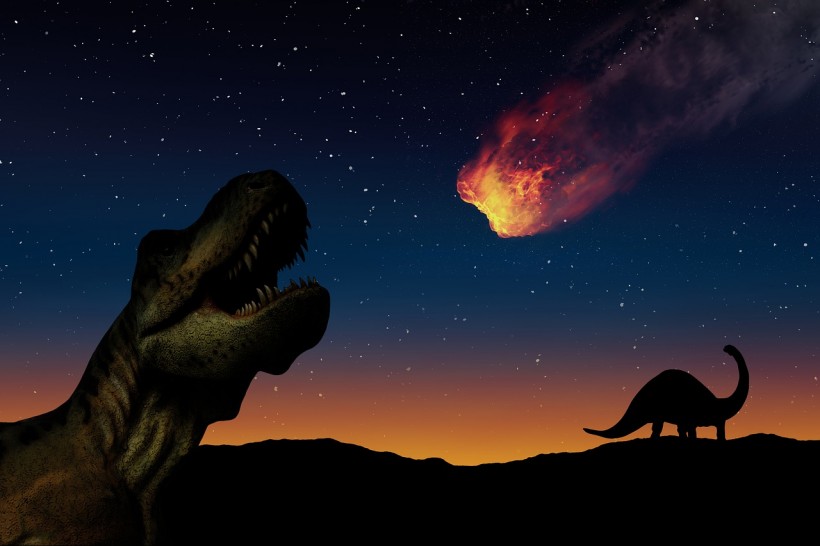NASA said a giant asteroid known as Asteroid 7335 (1989 JA) would pass near Earth next week.
The space agency estimates that this giant asteroid is roughly 5,900 feet (1.1 miles). The space rock is four times the size of the Empire State Structure and more than twice the size of Dubai's Burj Khalifa, the world's tallest building, according to UPI. Meanwhile, it's four times the size of the Empire State Building per Live Science.

Well-Preserved Fragment of the Asteroid That Killed the Dinosaurs Found in North Dakota Along With Other Fossils
Asteroid 1989 JA to Approach Earth Soon
Asteroid 7335 (1989 JA) is the largest asteroid that will make a close flyby on Earth this year. It will travel 47,200 mph(76,000 km/h), or 20 times faster than a speeding bullet, Live Science reported
It is listed on NASA's Jet Propulsion Laboratory's (JPL) following five asteroid approaches webpage, with other space rocks such as 70-ft. 2022 JQ1, a 190-foot asteroid
1989 JA will come close enough to Earth to be considered potentially hazardous and be seen with binoculars. But don't worry, the asteroid will pass Earth at about 2.5 million miles.
Mashable said the asteroid orbits the Sun every 861 days. As a result, the asteroid orbits Earth at irregular intervals. According to NASA's Jet Propulsion Laboratory, the closest asteroid encounter occurred in 1949 at 3.4 million miles.
Despite many pebbles on route to Earth, asteroid 7335 stood out for its size and distance and NASA's classification of it as an Apollo-type category and a "possibly dangerous" space rock.
Furthermore, with an anticipated distance of 2.5 million miles (4 million kilometers) from Earth, 7335 will be about ten times further than the moon when it makes a safe asteroid flyby.
However, the passage is dangerously near in terms of space dictionary and measurement.
There will be no asteroid impacting Earth shortly, among the other cosmic objects stated.
Should You Worry About Asteroid 1989 JA?
Inverse said the asteroid 1989 JA should pass Earth safely on its way around the Sun. It's only one of several near-Earth Asteroids (NEA) that NASA and others have monitored. As part of planetary protection programs, NASA and other organizations and observatories continually watch NEAs.
Last year, 2006 FJ42, a near-Earth object with a diameter of between 380 and 860 meters, approached within 2.7 million miles of Earth. In April, asteroid 2022 GN1 sailed safely by Earth, passing within 79,000 miles. These passes occur regularly, but they have the minimal potential of causing damage to our world. Astronomers are also aware of the majority of large-scale objects that may collide with Earth, and future observatories should aid in the discovery of smaller ones.
1989 JA will return in the following years after successfully passing by Earth in May 2022. According to NASA/JPL statistics, the asteroid will pass significantly closer in 2029 and 2048, at a distance of more than 24 million miles. Before 1989 JA gets as near as it was when it was found, the asteroid will make two other approaches in 2055 and 2062. A closer system will be made in 2081, when 1989 JA gets within 7 million miles of Earth, albeit it will not be as near as its present trip.
History of Space Rocks Passing By Earth
Boulder-sized space objects have hit Earth in recent history, but none have been as massive as Asteroid 7335.
The Chelyabinsk meteor burst above Russia on February 15, 2013, when it burnt up in the atmosphere. EarthSky said the explosion produced a power 20 to 30 times larger than the Hiroshima atomic bomb, and it was barely 65 feet broad.
On June 30, 1908, an asteroid measuring 200 feet wide erupted over Siberia with much more destructive intensity. According to CBC News, the explosion leveled about 1,300 square kilometers of woodland in a remote part of Russia.
The incident is today known as the Tunguska disaster.
The consequences of a mile-wide asteroid striking Earth would depend highly on where it entered the atmosphere. However, it may not be as devastating as the asteroid widely linked to the dinosaur extinction and believed to be 6 miles wide.
Since most of the planet is covered by water, the chances of such an asteroid exploding over the ocean are favorable. Although this is the best-case scenario for life on Earth, it may still have global consequences.
The heat from the event would force a significant volume of ocean water to evaporate, causing massive weather disruptions.
According to Space.com, an asteroid impacting the ocean would "probably not" generate a giant tsunami, contrary to popular belief.
A new scenario would emerge if a mile-wide asteroid erupted over land, perhaps inflicting a worldwide catastrophe with long-term consequences. If the incident occurred near a heavily populated region, the effects would be amplified.
However, there is no immediate danger of such an asteroid colliding with Earth because NASA is always alert for potential harmful asteroids. NASA is also developing a mission to divert an asteroid away from our planet if it detects one that will collide with Earth.
RELATED ARTICLE: Asteroid Flyby This May: Space Rock Larger Than Empire State Building Will Pass Near Earth on Sunday
Check out more news and information on Space in Science Times.










!['Cosmic Glitch' in Einstein's Theory of General Relativity Could Be Explained in This New Scientific Tweak [Study]](https://1721181113.rsc.cdn77.org/data/thumbs/full/53435/258/146/50/40/cosmic-glitch-in-einsteins-theory-of-general-relativity-could-be-explained-in-this-new-scientific-tweak-study.jpeg)



